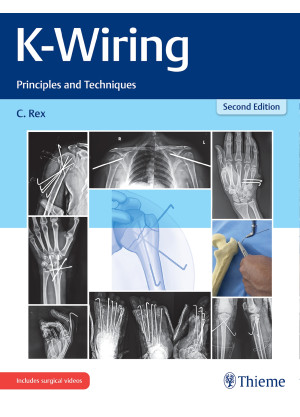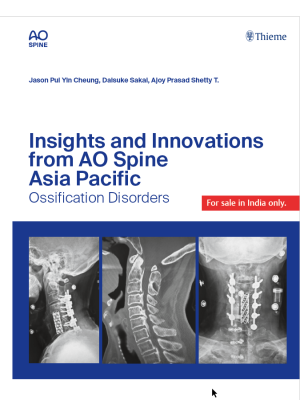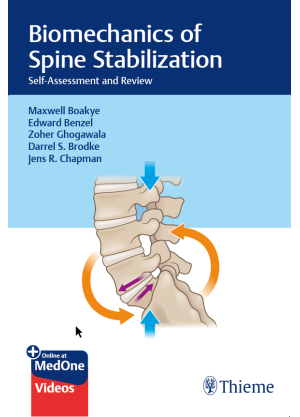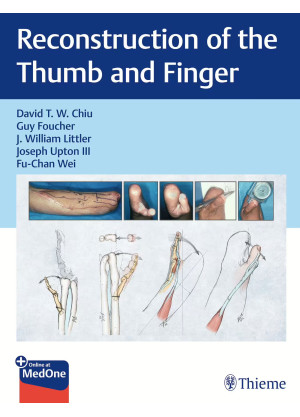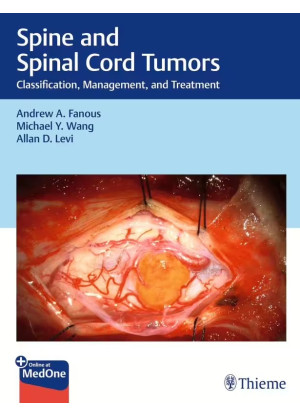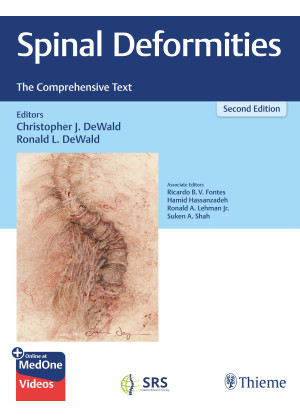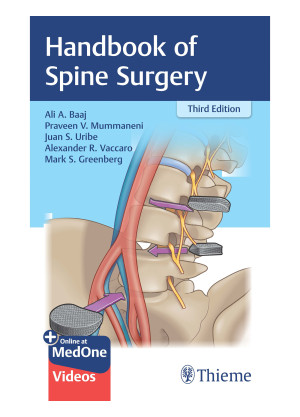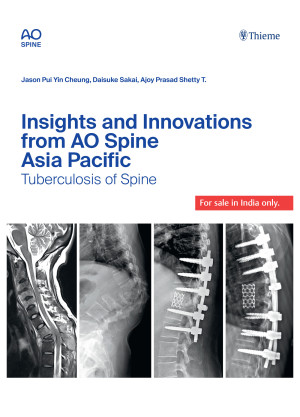The ultimate how-to resource on shoulder surgery from internationally renowned experts
Shoulder problems related to degenerative conditions, sports injuries, or trauma comprise a significant percentage of orthopaedic surgery practice. Shoulder Surgery: Tricks of the Trade reflects collective expertise from Joshua Dines, David Dines and Lawrence Gulotta, renowned orthopaedic surgeons at the prestigious Hospital for Special Surgery in New York, and an impressive cadre of contributors.
The unique resource features practical advice from recognized experts, presenting surgical essentials in an easy-to-learn and reproducible manner. Seventy-three chapters present key aspects of shoulder surgery procedures — from subacromial decompression and acromioplasty — to pectoralis major repair. Each succinct chapter includes step-by-step procedural guidance, indications, management of complications, and other invaluable pearls, tips, and tricks of the trade.
- Repair and reconstructive approaches for calcific tendinitis; rotator cuff, SLAP, labral, and glenohumeral ligament injuries; osteoarthritis; and more
- Shoulder replacement procedures including partial humeral head, stemless anatomic, and the use of an augmented polyethylene glenoid component for posterior glenoid wear
- A full continuum of arthroplasty topics, from basics such as patient positioning and retractory placement — to state-of-the-art techniques to resolve complications and failed surgeries
- High quality surgical videos detail the latest arthroscopic approaches, such as patch augmentation of rotator cuff repair and fracture fixation
This is the most user-friendly orthopaedic shoulder surgery guide available today and a must-have quick reference for all orthopaedic residents, fellows, and surgeons who treat patients with shoulder conditions.
This book includes complimentary access to a digital copy on https://medone.thieme.com.
I Rotator Cuff/Biceps
1 Subacromial Decompression and Acromioplasty
2 Arthroscopic Acromioclavicular Joint Resection
3 Arthroscopic Capsular Release
4 Arthroscopic Treatment of Calcific Tendinitis
5 Arthroscopic Rotator Cuff Repair
6 Partial Articular-Sided Supraspinatus Tear Repair
7 Arthroscopic Subscapularis Repair
8 Massive Rotator Cuff Repair (Mobilization Techniques, Slides)
9 Massive Rotator Cuff Repair: Margin Convergence
10 Revision Rotator Cuff Repair: Patch Augmentation
11 Superior Capsule Reconstruction with Fascia Lata Autograft
12 Superior Capsular Reconstruction
13 Arthroscopic Suprapectoral Biceps Tenodesis
14 Open Suprapectoral Biceps Tenodesis
15 Open Subpectoral Biceps Tenodesis
16 Arthroscopic Biceps Transfer
17 SLAP Repair
18 Internal Impingement
II Instability
19 Arthroscopic Treatment of Multidirectional Instability
20 Arthroscopic Anterior Stabilization
21 Open Anterior Stabilization (Bankart/Capsular Shift)
22 Role of Remplissage in Anterior Shoulder Instability
23 Double-Row Labral Repair
24 Anterior Humeral Avulsion of the Glenohumeral Ligament Repair
25 Modified Open Latarjet: The "One-Screw" Technique
26 The Arthroscopic Latarjet Procedure
27 The Guided All-Arthroscopic Latarjet Procedure Using Cortical Button Fixation
28 Eden–Hybinette for Failed Latarjet Procedure
29 Distal Tibia Allograft for Failed Latarjet
30 Partial Humeral Head Replacement: Allograft and Prosthetic
31 Arthroscopic Posterior Stabilization
32 Open Posterior Stabilization
33 Arthroscopic Posterior HAGL Repair
34 Modified McLaughlin for Posterior Dislocation
35 Latissimus Dorsi Tendon Transfer
36 Lower Trapezius Transfer
37 Pectoralis Major Transfer for Irreparable Subscapularis Tears
III Arthritis/Arthroplasty
38 Comprehensive Arthroscopic Management Procedure for the Treatment of Glenohumeral Osteoarthritis
39 Deltopectoral Approach for Shoulder Arthroplasty
40 Humeral Resurfacing Arthroplasty
41 Subscapularis Management in Shoulder Arthroplasty: Tenotomy, Peel, and Osteotomy
42 Total Shoulder Arthroplasty
43 Stemless Anatomic Shoulder Replacement
44 Patient-Specific Instrumentation Facilitates Glenoid Replacement in Shoulder Arthroplasty
45 Posterior Glenoid Wear in Total Shoulder Replacement: Eccentric Reaming
46 Posterior Glenoid Wear in Anatomic Total Shoulder Replacement: Augmented Polyethylene Glenoid Component
47 Bone Grafting for B2/B3 Glenoid
48 Convertible Components in Shoulder Arthroplasty
49 Superior Approach to the Shoulder
50 Reverse Shoulder Arthroplasty
51 Reverse Shoulder Arthroplasty with a Shaped Humeral Head Autograft for B2/B3 and C Glenoids
52 Patient-Specific Instrumentation for Severe Deformity in Reverse Shoulder Arthroplasty
53 Internal Latissimus Transfer for Reverse Shoulder Arthroplasty
54 Subscapularis Failure after Anatomic Total Shoulder Arthroplasty
55 Arthroscopic Glenoid Removal and Bone Grafting
56 Conversion of Failed Hemiarthroplasty to Reverse Shoulder Arthroplasty
57 Surgical Technique for Converting a Failed Total Shoulder Arthroplasty to Reverse Shoulder Arthroplasty
58 Stem Removal: Humeral Osteotomy
59 Explant/Insertion of Spacer for Infected Shoulder Arthroplasty
60 Convertible Humeral Stem: Anatomic to Reverse Arthroplasty
IV Trauma
61 Open Reduction and Internal Fixation for Proximal Humerus Fracture
62 Hemiarthroplasty for Proximal Humerus Fractures
63 Reverse Total Shoulder Arthroplasty for Proximal Humerus Fracture
64 Greater Tuberosity Fracture Treatment (Open and Arthroscopic)
65 Arthroscopically Assisted Removal of Proximal Humerus Locking Plates
66 Open Reduction and Internal Fixation Glenoid
67 Arthroscopic Reduction and Internal Fixation of Glenoid Rim Fractures
68 Open Reduction and Internal Fixation of Midshaft Clavicle Fracture
69 Open Reduction and Internal Fixation of Distal Clavicle Fractures
70 All-Arthroscopic Coracoclavicular Ligament Reconstruction for Type V Acromioclavicular Separation
71 Open Acromioclavicular Joint Reconstruction
72 Sternoclavicular Joint Reconstruction
73 Pectoralis Major Repair





